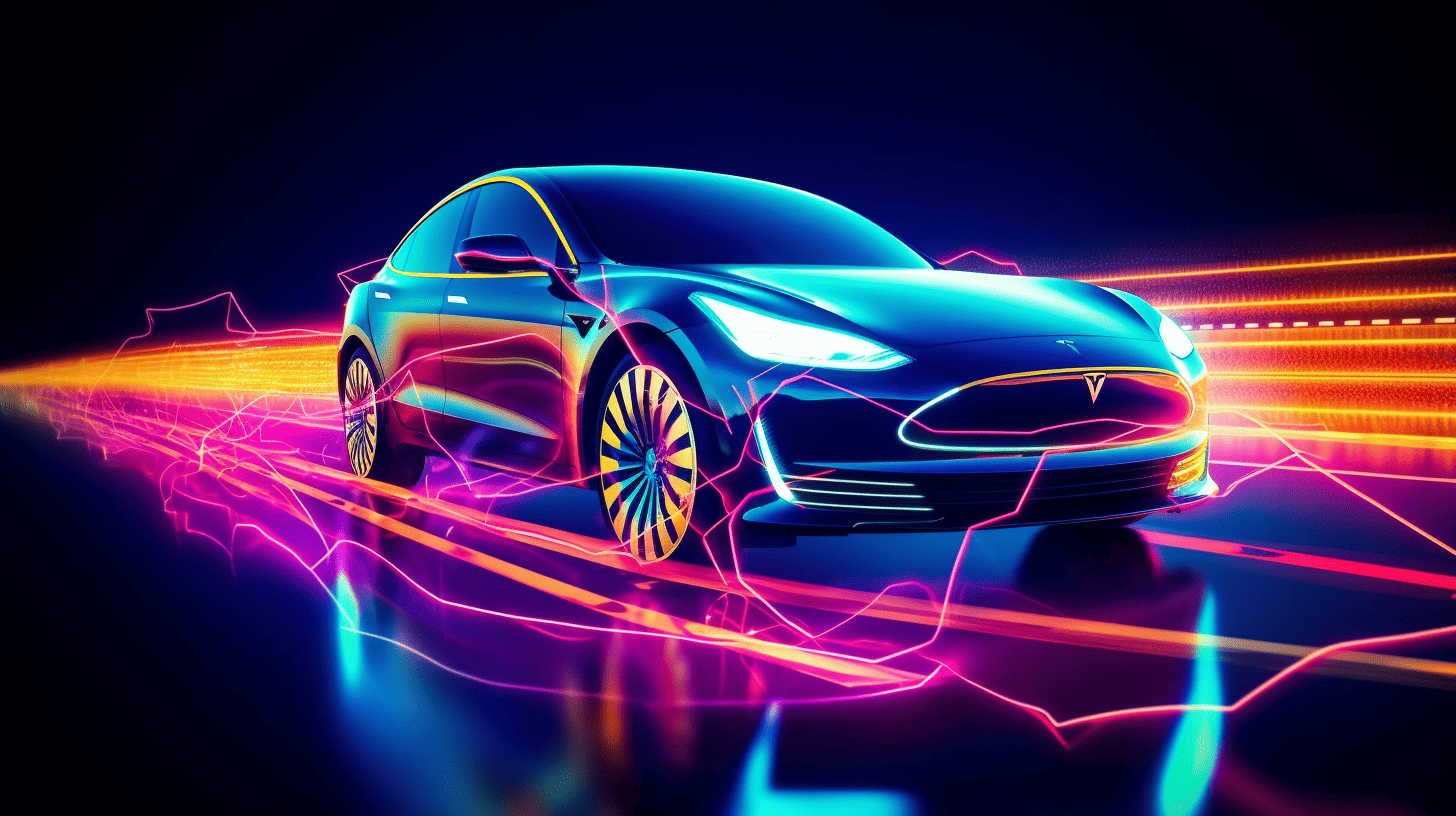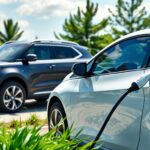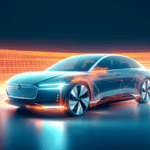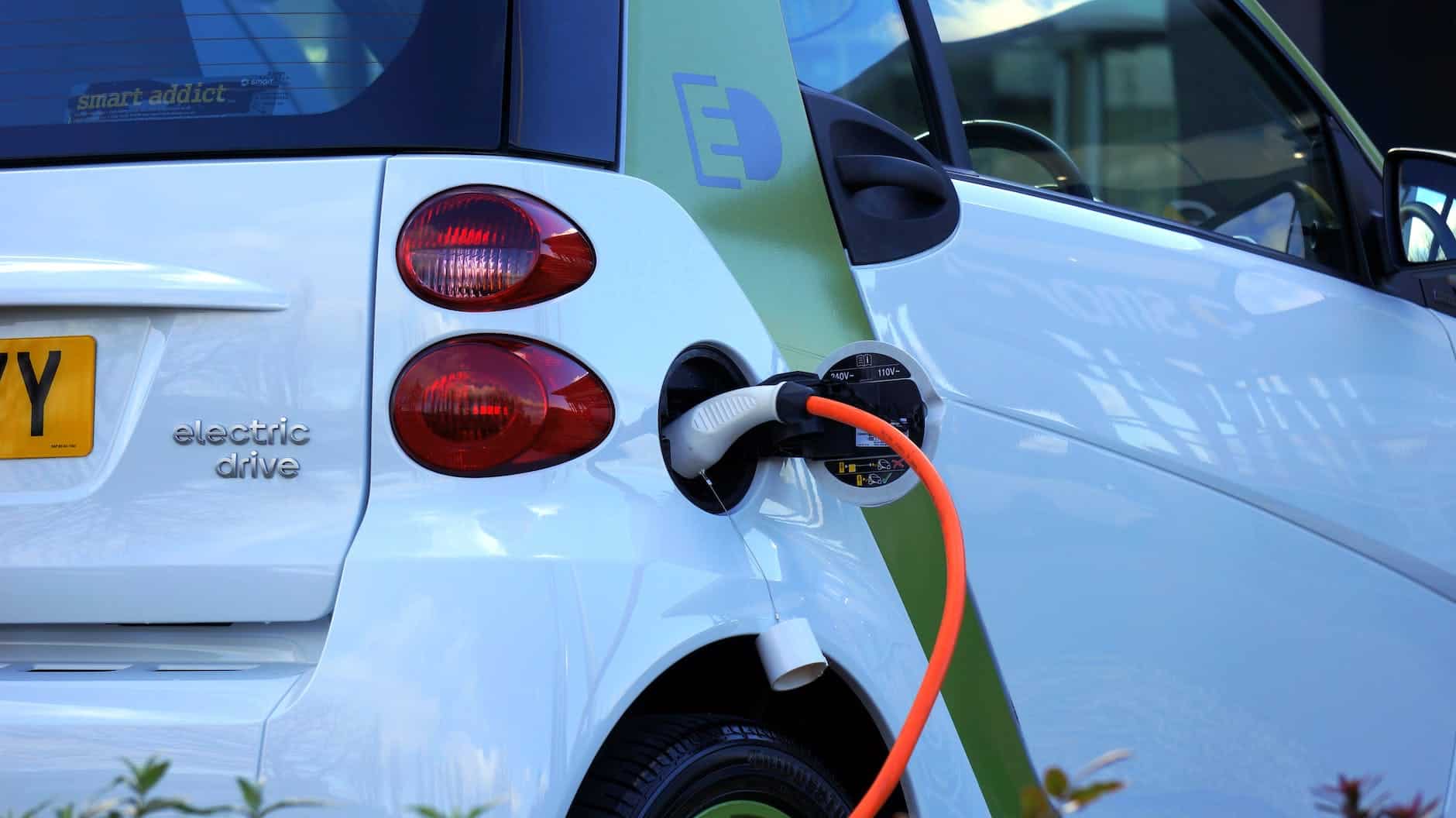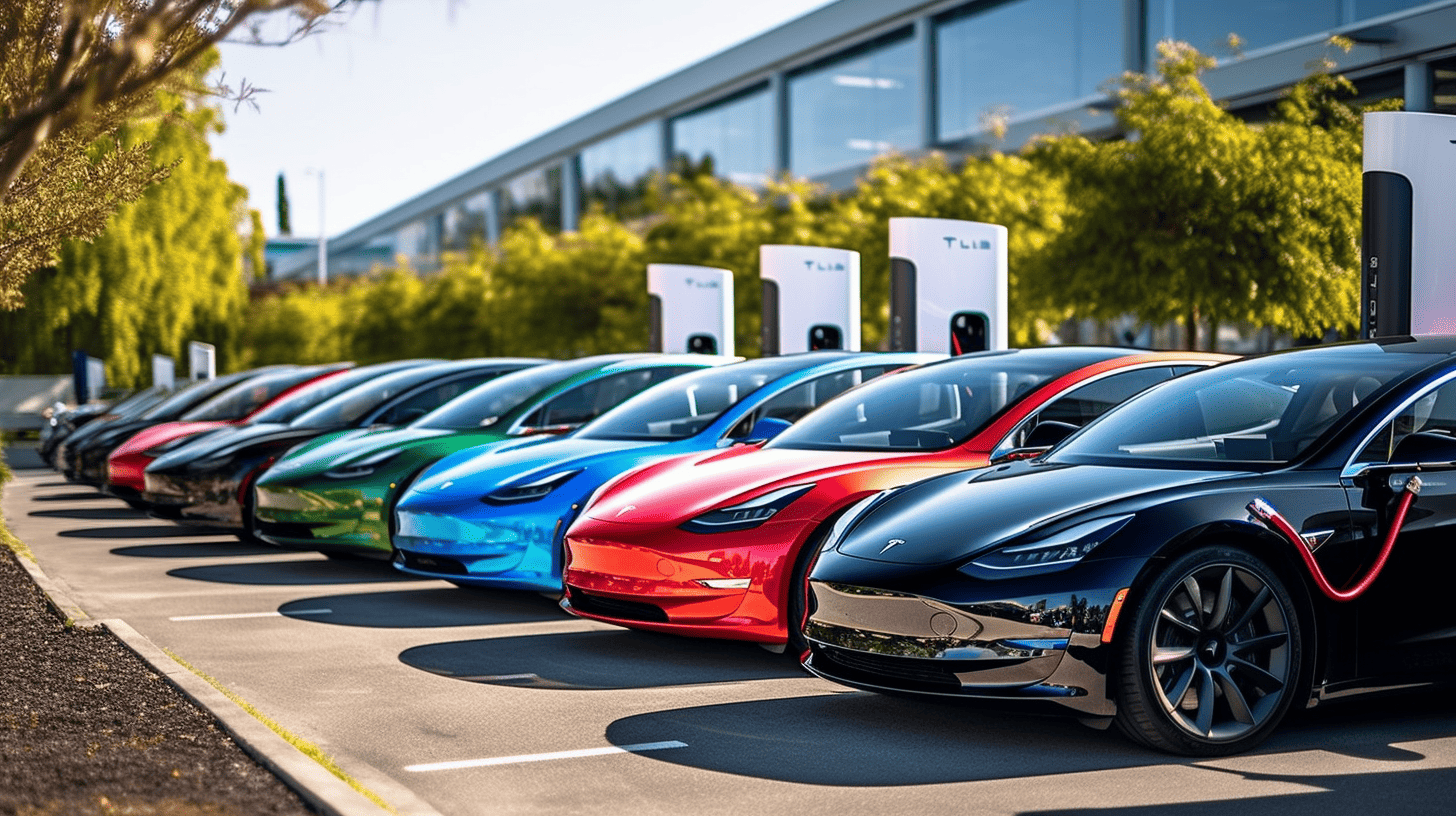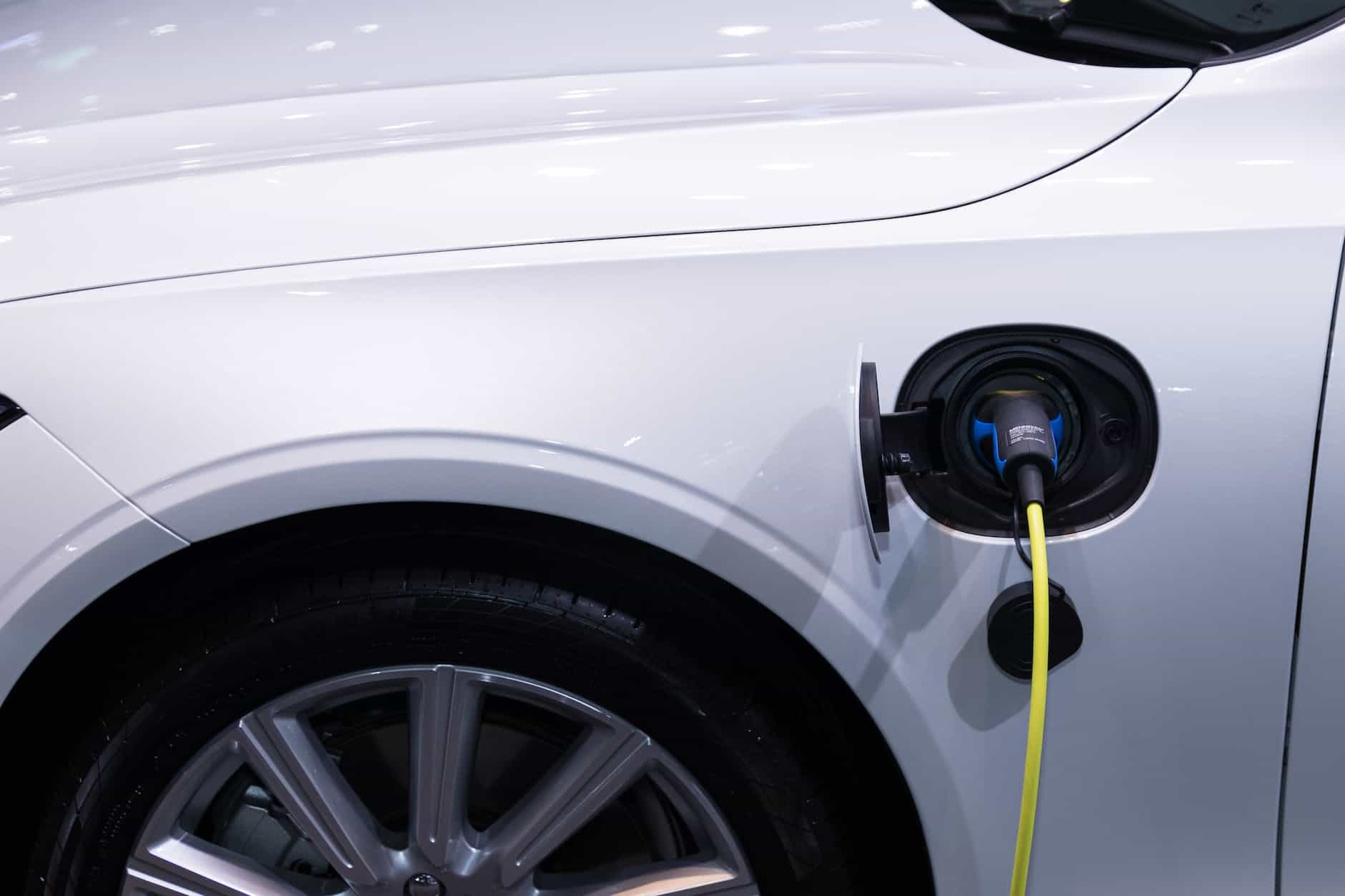Electric Vehicles (EVs) operate by utilizing electric motors and battery systems rather than internal combustion engines for their propulsion. These vehicles are powered by electricity, which can be sourced from rechargeable batteries or by connecting to an external electricity supply, such as a wall outlet. Comprehending the fundamental characteristics of an EV is crucial for appreciating its benefits over conventional gasoline-powered vehicles.
An Electric Vehicle can refer to any motorized automobile powered solely by one or more electric motors. This includes hybrid vehicles which use both electric and combustion components, as well as fully-electric vehicles such as those produced by Tesla Motors and Nissan Leaf.
All EVs have several key features in common, including being able to draw energy from onboard batteries for propulsion, having no tailpipe emissions since they do not burn fuel directly, and requiring less maintenance due to fewer moving parts than gasoline-powered internal combustion engine (ICE) cars.

The technology used in modern day EVs has been around for quite some time but was limited until recent advancements made them increasingly viable options for everyday transportation needs. Recent advances include longer range capabilities from improved battery technologies, faster charging times from better electronics, higher performance levels from more powerful motors, and smarter control systems for safer driving experiences.
These improvements bring greater potential for reducing air pollution and improving public health worldwide. As we will discuss further in the next section – the impact of EVs on climate change is undeniable
Impact On Climate Change
We may no longer be able to deny it, the effects of climate change are here. The rising temperatures and extreme weather events have become a part of our everyday lives. However, there is hope if we act now – electric vehicles can help reduce air pollution that contributes to global warming, mitigating its impacts on public health and the environment.
Electric cars produce zero tailpipe emissions; meaning they do not emit any green house gases or carbon dioxide into the atmosphere directly when driven. By replacing traditional gas-powered cars with electric ones we can significantly reduce carbon emissions associated with transportation and therefore mitigate their contribution to climate change. This could also lead to an overall decrease in air pollutants like nitrogen oxides (NOx) and particulate matter which contribute more substantially to global warming than other greenhouse gases like methane.
This reduction in emission levels would benefit both short term and long term environmental health outcomes as well as reducing the impact of climate change by decreasing atmospheric concentrations of these harmful substances. It’s clear that switching from conventional fuel burning engines to electric vehicles has potential for significant climate change mitigation – so why wait? Let’s start making moves towards a cleaner future today!
Benefits To Air Quality
Electric vehicles (EVs) offer a number of benefits to air quality, making them an ideal green transport option. First and foremost, they produce zero emissions while running on battery power – this is in stark contrast to traditional gas or diesel-powered cars which can cause significant damage to the atmosphere through their exhaust emissions.
Secondly, EVs are powered by electricity supplied from renewable sources such as solar, wind and geothermal energy. This means that no matter where you live, your vehicle can be charged with clean energy generated locally without relying on fossil fuels for its power source. Additionally, electric cars have longer battery life than conventional cars meaning fewer trips to the petrol station and less reliance on non-renewable resources over time.
The use of EVs also reduces local air pollution levels as there is no burning of fuel taking place close to populated areas. Even when using electricity from coal-fired power plants, EV owners will still benefit from lower carbon dioxide emission levels since these engines are more efficient at converting energy into motion than combustion-based ones.

All these factors contribute towards improved public health outcomes by reducing exposure to toxic pollutants associated with traditional vehicles. Electric cars enable us to reduce our environmental impact while enjoying the convenience of modern transportation technology.
Advantages Over Traditional Vehicles
As we have seen, electric vehicles (EVs) offer an effective solution to reduce air pollution and improve public health. But what other advantages do they have over traditional cars? EVs not only provide environmental benefits, but also economic ones too.
For starters, EVs are more efficient than conventional petrol or diesel-powered vehicles because they require less fuel to travel the same distance. This means that fewer emissions are released into the atmosphere and that financial savings can be made in terms of reduced running costs. Furthermore, since these vehicles run on electricity instead of fossil fuels such as petrol or diesel, no money needs to be spent on buying expensive fuel for them. This makes them a far cheaper option for people who want to make long journeys without having to worry about refuelling costs.
In addition to this, EV technology is becoming increasingly advanced which has led to several improvements in performance and safety features compared with traditional cars. For example, many EVs now come equipped with regenerative braking systems which allow drivers to recover energy while slowing down their vehicle and store it in the battery for later use. This reduces wear and tear on brakes as well as improving overall efficiency. Similarly, some models feature improved suspension systems which helps reduce driver fatigue by absorbing any bumps in the road more effectively than standard cars would normally do so. All of these features combine to create a driving experience that is both safer and more enjoyable for users – something that cannot always be achieved with older technologies.
Overall then it is clear that there are multiple advantages associated with switching from traditional petrol or diesel powered vehicles to electric ones when it comes to reducing air pollution levels and improving public health outcomes. In terms of both cost savings and improved performance features, EVs represent a great alternative choice for those looking for cleaner transportation solutions in today’s world – paving the way towards a healthier future for us all! With this knowledge firmly established, let us now turn our attention towards considering some of the challenges posed by implementing EV technology at scale…
Challenges Of Implementing Ev Technology
The challenges of implementing electric vehicle (EV) technology are numerous and can be seen in both the infrastructure and battery costs associated with the vehicles. In terms of infrastructure, there is a need to build out charging stations across the nation so that drivers have access to reliable, convenient sources of electricity. Additionally, it’s important to consider electric range – how far EVs can travel on one charge – as this impacts where individuals may or may not choose to drive their EV.
When it comes to battery costs and installation costs for these vehicles, consumers tend to find them prohibitively expensive. Although manufacturers aim to produce more affordable options each year, many people still struggle with affording an EV that meets their needs. This makes it difficult for those who would like to adopt cleaner transportation technologies but lack the means necessary for purchase and maintenance.
Moreover, politicians must take into account incentives that could help reduce the cost burden of adopting EVs. Such incentives include subsidies or tax credits offered by governments at varying levels (national, state/provincial). It will also require a collaborative effort between local authorities and private entities in order to ensure that adequate charging station networks exist throughout populated areas as well as rural locations.
In sum, while tackling air pollution through improved public health requires widespread adoption of electric vehicles, we face considerable barriers when trying to implement such technologies due its costly nature. The potential economic benefits should therefore be explored in order to make EVs accessible for all citizens across North America.
Potential Economic Benefits
The potential economic benefits of electric vehicles (EVs) are immense. According to a recent study, the global EV market is projected to grow from 2.6 million units in 2019 to 11 million units by 2025; an increase of over 400%. This growth rate shows that EVs offer tremendous opportunities for cost savings and improved public health outcomes.
| Cost Savings | Public Health Benefits |
|---|---|
| Reduced fuel costs | Cleaner air quality |
| Lower maintenance costs | Fewer carbon emissions |
| Tax credits & incentives | Reduced noise pollution |
By transitioning away from combustion engine vehicles, drivers can save on fuel costs as well as lower their overall vehicle maintenance expenses. Additionally, there is a wide range of government tax credits and other financial incentives available that make purchasing an EV more affordable than ever before. These factors create further motivation to transition away from traditional cars and towards cleaner alternatives such as hybrid or electric vehicles.
Moreover, the environmental health implications of switching to EVs cannot be understated. The reduction in air pollutants would result in reduced respiratory issues among vulnerable populations, while also promoting better air quality across cities worldwide. Furthermore, because they produce fewer emissions and less noise than regular cars, EVs lead to quieter neighborhoods with less traffic noise pollution which provides greater peace of mind for local residents.
These examples demonstrate how governments around the world can foster positive changes in society through policies and incentives supporting the adoption of clean energy technologies like electric vehicles. They provide citizens with access to cost-effective transportation options that promote healthier lifestyles and cleaner environments for generations to come.
Government Policies And Incentives
Government policies and incentives are essential to encourage the adoption of electric vehicles (EVs). These can include regulatory standards, subsidies, tax credits, and incentives that reduce the costs of ownership. EV regulations should be designed to ensure that EVs are safe for drivers and passengers as well as efficient in their use of energy. Governments also need to provide incentives for consumers to purchase EVs by creating EV tax credits or offering EV subsidies. This will make it easier for people to afford an EV without having a significant impact on their budget.
In addition, governments may want to create special programs such as charging networks or offer rebates and discounts on electricity rates when using public chargers. Providing these types of services is important because they help increase the convenience factor associated with owning an EV. The more convenient it is to own an EV, the more likely people are going to choose one over traditional gasoline-powered cars.
Finally, governments must continue working together with industry leaders so that all stakeholders have access to new technologies and innovations that lead to better air quality and improved health outcomes for everyone. Ultimately, this will result in cleaner cities where residents breathe healthier air while reducing emissions from transportation sources. Looking at battery technology and charging networks provides another opportunity for clean transport solutions which could benefit many communities across the world.
Battery Technology And Charging Networks
Moving forward, battery technology and charging networks are two essential components of electric vehicle (EV) success. EV batteries provide the power needed to propel a car while also controlling its speed, acceleration, and performance. Additionally, they store energy produced from regenerative braking that can be used for future trips. To support these vehicles on our roads, an expansive network of charging infrastructure is necessary. This includes dedicated EV chargers as well as public-access charging stations located in urban areas or along highways.
The availability of reliable charging infrastructure has been a major factor in the growth of EVs since it gives drivers more confidence when traveling long distances. Furthermore, having access to rapid (DC) ev charging stations helps reduce range anxiety and increases overall efficiency. In addition, many cities now offer incentives for installing home EV charger systems which serve as another way to make owning an EV even more attractive. By providing convenient places to charge their vehicles at home or around town, these initiatives aim to encourage people to switch away from polluting combustion engines toward cleaner alternatives like electric cars.
The development of advanced battery technologies combined with readily available charging infrastructure provides numerous benefits beyond just reducing air pollution levels: it makes driving an electric car easier than ever before! Improved battery life cycles enable longer journeys between charges while faster charging times help minimize waiting time at public facilities. As such, these advancements not only allow us to enjoy all the advantages that come with owning an EV but also open up possibilities for sustainable transportation solutions that will ultimately improve public health outcomes across communities worldwide.
Public Health Impacts
Electric vehicles are a great way to reduce air pollution and improve public health. They have the potential to significantly decrease emissions of harmful pollutants that can cause respiratory illnesses, chronic diseases, cancer, and even death. Studies show that electric vehicle use can lead to substantial reductions in air pollutants, including nitrogen oxide (NOx), carbon monoxide (CO) and particulate matter (PM). Additionally, they produce no noise pollution which is important for protecting people’s hearing and mental wellbeing.
The environmental impacts of electric vehicles go beyond just reducing air pollution – they also help protect our natural resources. By producing less exhaust fumes than conventional vehicles, EVs help limit greenhouse gas emissions that cause global warming as well climate change. This helps preserve ecosystems around the world and ensures their long-term sustainability.
Overall, electric vehicles are an effective solution for improving public health by reducing air pollution and other negative environmental impacts while providing quiet transportation options. Their widespread adoption could significantly reduce numerous health risks associated with exposure to hazardous air pollutants while helping protect our planet from further degradation.
Future Considerations
With the public health impacts of electric vehicles in mind, it is important to consider their future role in reducing air pollution and improving public health. For instance, a hypothetical case study could be set up where an entire city switches from gasoline-powered cars to electric vehicles. This would result in considerable emissions reductions; not only would there be fewer pollutants emitted directly from car exhausts, but also the electricity needed for charging EVs can come from clean energy sources such as solar or wind power.
Furthermore, governments could implement additional programs that promote EV usage and provide incentives for people who are willing to switch over to electric mobility solutions. These strategies should include things like tax credits, subsidies on vehicle purchases, free charging kiosks in public places, and more stringent regulations on gas-powered cars in order to further encourage the adoption of EVs. Such measures will help reduce emission levels significantly while making sure that all citizens have access to affordable zero-emission transportation solutions.
Finally, we must recognize that transitioning away from fossil fuels is essential if we want to achieve long term carbon emission reduction targets. Electric vehicles may very well play an important part in this transition by replacing traditional fuel based transport with cleaner alternatives that are better for our environment and our collective health. However, for these goals to be realized effectively and successfully it is necessary for us all – governments included –to take proactive steps towards creating a greener future through effective pollution reduction strategies and incentivizing more sustainable forms of transportation.
Frequently Asked Questions
How Long Do Electric Vehicles Typically Last?
As an environmental health scientist, I am often asked about the life expectancy of electric vehicles. This is a valid question as electric car longevity and EV lifespan are important factors in making them economically viable alternatives to traditional fossil fuel cars. When considering the battery life of an electric car (EV), one must understand that the type of battery and its maintenance have significant impacts on how long it will last.
When looking at lithium-ion batteries, which are commonly used in EVs, they typically last anywhere from 5 to 8 years depending on use, charging patterns, and other conditions such as temperature fluctuations. If these batteries are well maintained with regular checkups and proper charging cycles, they can even last up to 10–15 years or more. On the other hand, if neglected or not properly maintained, their useful lives could be much shorter than expected.
Overall, when evaluating electric vehicle life spans versus those of conventional combustion engine cars -which generally range between 150k-200k miles for gasoline models- it’s clear that battery performance plays a huge role in determining how long an EV will last over its lifetime. Therefore, understanding all aspects of EV care is essential for maximizing your investment into this clean energy technology.
What Type Of Maintenance Do Electric Vehicles Require?
Electric vehicles require regular maintenance, just like traditional gasoline-powered cars. In order to keep an electric vehicle running smoothly, it is important for owners to stay up-to-date with the various types of maintenance needed. This includes checking and replacing parts such as brakes, tires, filters and charging systems. Additionally, there are several tips that can help reduce EV maintenance costs over time:
- Create a Maintenance Schedule: It’s best to create a routine maintenance schedule that outlines when certain tasks should be performed on your electric vehicle. This will ensure that all necessary procedures are completed in a timely manner.
- Be Aware of Early Warning Signs: Paying attention to any warning indicators or signs coming from your car could save you time and money down the road. If anything seems off while driving or during an inspection, contact a qualified technician immediately.
- Regularly Inspect Your Vehicle: Make sure to regularly inspect your electric vehicle for things like loose wires, frayed cables, cracked hoses and other components that may need repair or replacement. Doing so can prevent larger problems from occurring later on.
As an environmental health scientist, I highly recommend following these three tips to maintain an electric vehicle properly and efficiently. Regular inspections and preventive measures can go a long way towards keeping an EV in top condition without breaking the bank. Furthermore, understanding what type of maintenance needs to be done at specific intervals helps owners better plan ahead for future service appointments – ultimately saving them both time and money in the long run!
Are Electric Vehicles More Affordable Than Traditional Vehicles?
When considering the affordability of electric vehicles, it is important to evaluate both the upfront and long-term costs. Electric vehicles can have a higher price tag than traditional gasoline cars, but there are often incentives available for those looking to purchase an EV that make them more financially accessible. Furthermore, when looking at total cost of ownership over time, electric vehicles can be less expensive in comparison to their traditional vehicle counterparts due to lower fuel and maintenance costs.
Due to advances in technology and increasing consumer interest, electric vehicle prices are becoming increasingly competitive with traditional gasoline cars. Incentives such as tax credits and rebates can also help offset initial costs associated with purchasing an EV. Additionally, while they require some specialized maintenance like battery replacements or software updates, EVs typically require fewer repairs overall compared to gas-powered cars which results in significant savings over time.
Considering all factors related to cost, electric vehicles appear to be a viable option for consumers who want to reduce air pollution while saving money on transportation expenses. Although this type of vehicle may initially have a higher sticker price than some traditional models, the combination of reduced operating costs and incentives make electric vehicles worth investigating for anyone interested in improving public health through sustainable transport solutions.
What Is The Range Of Electric Vehicles?
When considering electric vehicles, one of the most important factors to consider is their range. The range capacity of an electric vehicle (EV) depends on its battery size and driving style. Generally, EVs have a distance range between 70-400 miles per charge depending on the model and type of EV. It’s also possible to increase this charging range by installing additional batteries or through a process known as regenerative braking.
Regenerative braking allows the EV’s motor to convert energy from breaking into electricity, which can be used to extend the vehicle’s overall range. As such, it has become increasingly popular for drivers looking for long-distance journeys in their EVs without having to recharge too frequently. On average, using regenerative braking methods can add up to 10% extra mileage onto an EV’s initial battery range estimate.
In addition to regenerative braking, charging stations are located in many cities across the world allowing owners of electric cars to ‘top off’ their batteries when necessary. These charging points provide convenience and added peace of mind for those travelling longer distances in their EVs. With these combined methods, it is now possible for some models of EV to cover ranges in excess of 400 miles – more than enough distance for both short commutes and long road trips alike!
Are Electric Vehicles Safer Than Traditional Vehicles?
Electric vehicles (EVs) have become increasingly popular due to their environmental benefits and increased safety. But how do EVs compare with traditional gasoline cars when it comes to safety? This article will explore the relative safety of electric, hybrid, and traditional vehicles on the road today.
In terms of crash-worthiness, studies indicate that electric vehicle drivers are more likely to survive a crash than those in a standard gasoline car. Electric cars tend to be heavier and therefore provide greater protection for passengers in an accident. Additionally, because they lack combustion engines or fuel tanks, they are less prone to fire following a collision.
To further understand the impacts of vehicle safety on public health, we must consider other factors such as:
- Vehicle Design & Functionality:
- Electric Vehicles: Most electric cars come equipped with advanced driver assistance systems like lane departure warnings and automatic emergency braking which can help prevent accidents altogether.
- Hybrid Cars: Hybrids combine both electric motors and petrol/diesel engines into one package giving them a power boost but also reducing emissions significantly compared to conventional gasoline cars.
- Traditional Vehicles: Standard gasoline powered cars generally have very few features designed specifically for improved safety over other types of vehicles – most rely solely on seatbelts and airbags for occupant protection in the event of an accident.
It is clear from these comparisons that electric vehicles offer superior levels of safety compared to traditional gas-powered automobiles while still providing significant reductions in carbon dioxide emissions when compared against hybrids or regular internal combustion engine based cars. By investing in research and development around EV technologies, we can make strides towards improving public health by decreasing our dependence on fossil fuels while simultaneously increasing overall automotive safety standards through innovative design approaches focused on minimizing risk associated with driving.
Conclusion
In conclusion, electric vehicles have the potential to reduce air pollution and improve public health. Research has shown that electric vehicles can last up to two decades with minimal maintenance required. They are also more affordable than traditional gasoline-powered vehicles, making them a great choice for those on a budget. And although their range may be shorter than traditional cars, electric vehicle technology is rapidly evolving and improving every day.
On top of all this, recent studies show that electric vehicles are safer too – in fact, they’ve been found to decrease fatal crash rates by 39%. This statistic alone should make readers consider investing in an electric car – not only will it help protect our environment from emissions but it could potentially save lives as well!
Ultimately, electric vehicles offer an eco-friendly solution to reducing air pollution while increasing safety levels on roads. By switching over to these sustainable means of transportation we can come one step closer towards improving public health across the globe.
